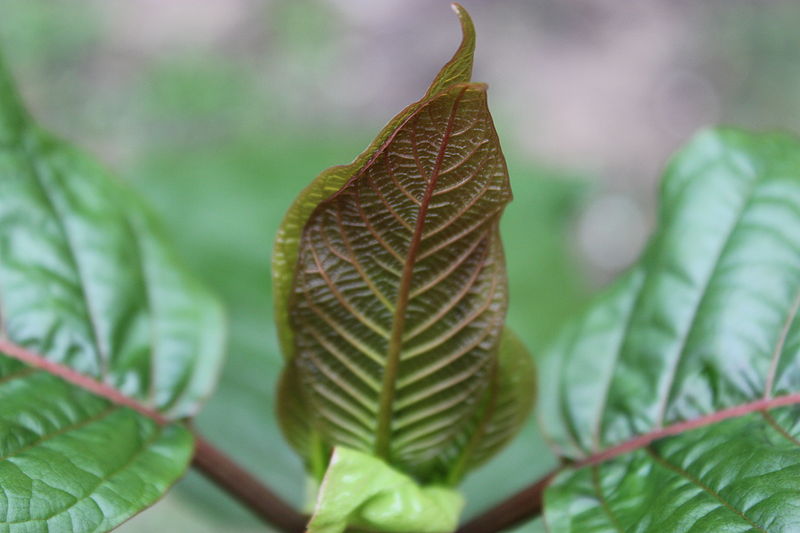 Cassius Kamarampi
Cassius Kamarampi
September 6, 2016
What is the true motivation behind the DEA’s decision to ban kratom? Could it be the fact that enormous swathes of researchers are trying to develop synthetic opioids, patentable, profitable drugs to replace such things as kratom or pharmaceutical painkillers?
Three synthetic opioids in particular were synthesized from the alkaloids in kratom from 2008- 2016: MGM-9, MGM-15, and MGM-16.
They were synthesized from kratom’s alkaloids Mitragynine and 7-Hydroxymitragynine: to make what is essentially patentable, pharmaceutical kratom.
The first study, published in 2008, took Mitragynine and used it to synthesize “MGM-9”. The study says:
The second study published in 2014 synthesized MGM-15 and MGM-16 from kratom’s other primary alkaloid, 7-Hydroxymitragynine. The study says:
One can find dozens of studies from the past few years, in which researchers synthesized new opioid compounds and tested them on monkeys (primates). This is a huge market.
From one of many studies, testing the opioid “TH-030418”:
From another study testing an opioid called “SR 16435”:
From another study testing an opioid called “Cebranopadol”:
Regardless of whether or not the kratom ban and pharmaceutical interests are directly connected, the synthesis of new opioid compounds and continued efforts by pharmaceutical interests to patent new opioids should illustrate how kratom’s legality is a potential obstacle in their way.
If anyone can find concrete ties between the synthesis of mitragynine related opioids and the DEA’s decision to ban kratom, please contact us here at Era of Wisdom via the contact section on our website.
This article (“Pharmaceutical Kratom” Real Reason for Kratom Ban? New Opioid “MGM-15” Derived from Mitragynine)is free and open source. You have permission to republish this article under a Creative Commons license with attribution to Era of Wisdom.org.
What is the true motivation behind the DEA’s decision to ban kratom? Could it be the fact that enormous swathes of researchers are trying to develop synthetic opioids, patentable, profitable drugs to replace such things as kratom or pharmaceutical painkillers?
Three synthetic opioids in particular were synthesized from the alkaloids in kratom from 2008- 2016: MGM-9, MGM-15, and MGM-16.
They were synthesized from kratom’s alkaloids Mitragynine and 7-Hydroxymitragynine: to make what is essentially patentable, pharmaceutical kratom.
The first study, published in 2008, took Mitragynine and used it to synthesize “MGM-9”. The study says:
“Mitragynine is a major indole alkaloid isolated from the Thai medicinal plant Mitragyna speciosa that has opium-like properties, although its chemical structure is quite different from that of morphine. We attempted to develop novel analgesics derived from mitragynine, and thus synthesized the ethylene glycol-bridged and C10-fluorinated derivative of mitragynine, MGM-9 [(E)-methyl 2-(3-ethyl-7a,12a-(epoxyethanoxy)-9-fluoro-1,2,3,4,6,7,12,12b-octahydro-8-methoxyindolo[2,3-a]quinolizin-2-yl)-3-methoxyacrylate].”
The second study published in 2014 synthesized MGM-15 and MGM-16 from kratom’s other primary alkaloid, 7-Hydroxymitragynine. The study says:
“In this study, we developed dual-acting μ- and δ-opioid agonists MGM-15 and MGM-16 from 7-hydroxymitragynine for the treatment of acute and chronic pain.”
One can find dozens of studies from the past few years, in which researchers synthesized new opioid compounds and tested them on monkeys (primates). This is a huge market.
From one of many studies, testing the opioid “TH-030418”:
“Numerous efforts have been made on the chemical modification of opioid compounds, with the ultimate goal of developing new opioid analgesics that is highly potent and low/non-addictive. In a search for such compounds, TH-030418 [7α-[(R)-1-hydroxy-1-methyl-3-(thien-3-yl)-propyl]-6,14-endo-ethanotetrahydrooripavine] was synthesized.”
From another study testing an opioid called “SR 16435”:
“We identified a novel nociceptin/orphanin FQ (NOP)/mu-opioid receptor agonist, SR 16435 [1-(1-(bicyclo[3.3.1]nonan-9-yl)piperidin-4-yl)indolin-2-one], with high binding affinity and partial agonist activity at both receptors.”
From another study testing an opioid called “Cebranopadol”:
“Cebranopadol (trans-6′-fluoro-4′,9′-dihydro-N,N-dimethyl-4-phenyl-spiro[cyclohexane-1,1′(3’H)-pyrano[3,4-b]indol]-4-amine) is a novel analgesic nociceptin/orphanin FQ peptide (NOP) and opioid receptor agonist.”
Regardless of whether or not the kratom ban and pharmaceutical interests are directly connected, the synthesis of new opioid compounds and continued efforts by pharmaceutical interests to patent new opioids should illustrate how kratom’s legality is a potential obstacle in their way.
If anyone can find concrete ties between the synthesis of mitragynine related opioids and the DEA’s decision to ban kratom, please contact us here at Era of Wisdom via the contact section on our website.
This article (“Pharmaceutical Kratom” Real Reason for Kratom Ban? New Opioid “MGM-15” Derived from Mitragynine)is free and open source. You have permission to republish this article under a Creative Commons license with attribution to Era of Wisdom.org.
No comments:
Post a Comment
Note: Only a member of this blog may post a comment.